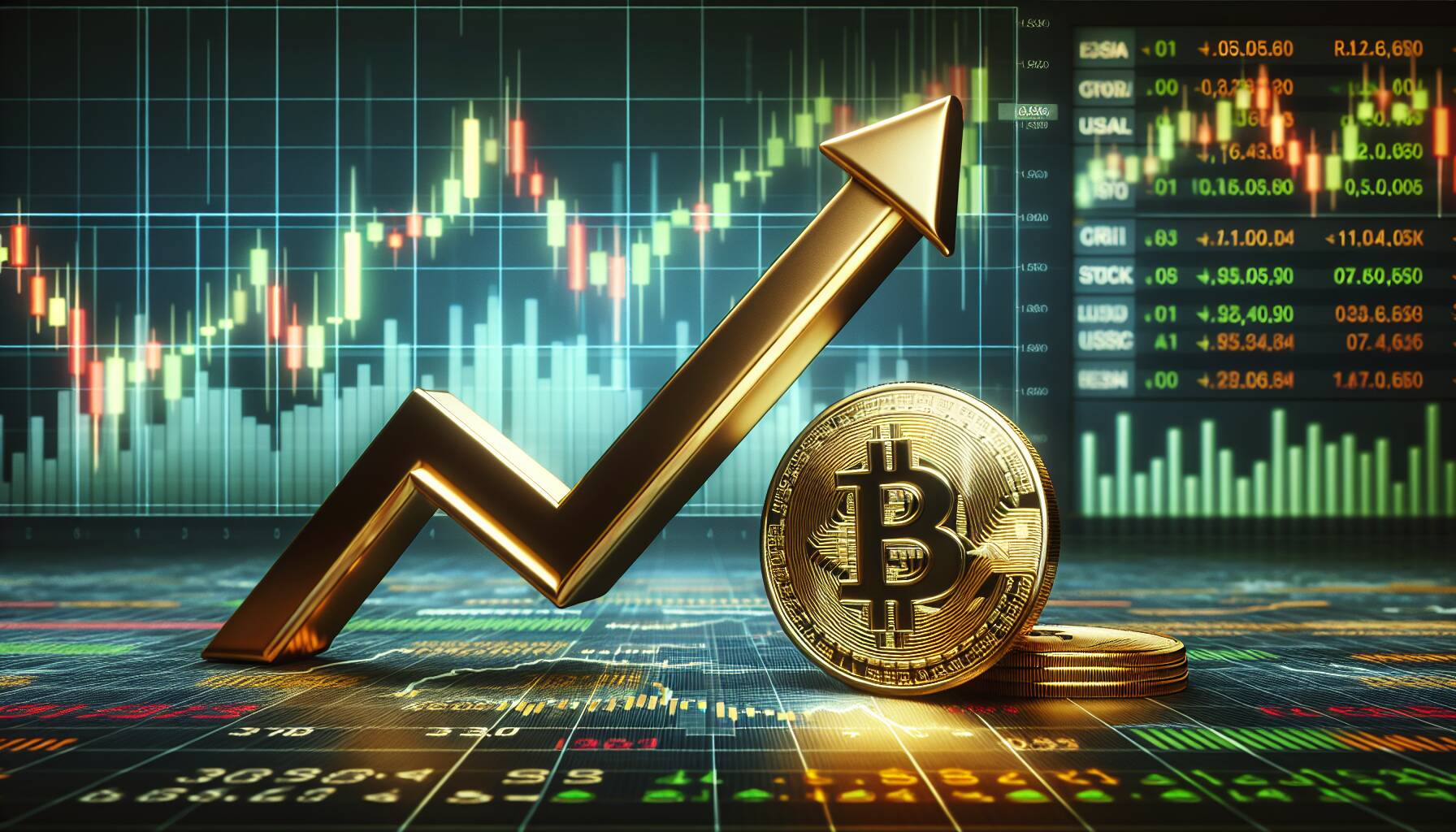In a recent analysis by banking giant JPMorgan, the projection for Bitcoin (BTC) has sparked significant interest, suggesting a potential climb to approximately $165,000. This forecast is based on a volatility-adjusted comparison to gold, highlighting what the bank views as a substantial upside for Bitcoin if the ongoing “debasement trade” continues to gain traction. Currently trading near $119,000, Bitcoin would require a 40% increase to align with the scale of private gold holdings when evaluated for risk.
The “debasement trade” refers to the growing trend of investors acquiring assets like Bitcoin and gold as a safeguard against fiat currency devaluation. As retail investors become increasingly engaged in this strategy, both Bitcoin and gold exchange-traded funds (ETFs) have seen significant inflows over the past quarter. JPMorgan’s analysts, led by Nikolaos Panigirtzoglou, have observed that investment into these funds has surged since late 2024, a trend that has intensified ahead of the U.S. presidential election.
“Cumulative flows into spot Bitcoin and gold ETFs have risen sharply, with retail buyers driving much of the activity,” stated the bank.
This momentum is partly driven by rising concerns about inflation, increasing government deficits, and diminishing trust in fiat currencies in various emerging markets. While retail investors have led the charge, institutional participation has primarily been through Bitcoin and gold futures at the Chicago Mercantile Exchange (CME), where they have remained net buyers since 2024, albeit at a slower pace compared to retail demand.
The recent surge in gold prices has notably amplified Bitcoin’s appeal, resulting in a reduced volatility ratio between the two assets, drifting below 2.0. This shift reinforces JPMorgan’s belief that Bitcoin is undervalued compared to gold, with its current price trailing approximately $50,000 behind the model’s suggested value.

JPMorgan’s Bitcoin Projections and Market Trends
- Bitcoin Price Projection: JPMorgan estimates that bitcoin (BTC) could rise to around $165,000 based on volatility-adjusted metrics relative to gold.
- Debasement Trade: This strategy involves purchasing assets like bitcoin or gold to protect against fiat currency devaluation.
- Retail Investor Activity: There has been an increase in retail investment in bitcoin and gold ETFs, reflecting growing interest in hedge assets.
- Cumulative Flows: Inflows into spot bitcoin and gold ETFs have surged, with retail buyers significantly influencing the market.
- Institutional Investment: While institutions are investing in bitcoin and gold futures, their momentum is currently trailing behind retail participation.
- Market Sentiment: The rise in gold prices has enhanced bitcoin’s attractiveness, as highlighted by the shifting bitcoin-to-gold volatility ratio.
- Current Pricing Gap: Bitcoin is approximately $50,000 below JPMorgan’s model price, indicating potential for growth.
JPMorgan’s Bullish Bitcoin Outlook vs. Market Trends
JPMorgan’s recent analysis positions bitcoin as a potentially lucrative investment, predicting it could reach around $165,000 when adjusted for volatility against gold. This optimistic perspective is rooted in the increasing trend of the “debasement trade,” a strategy gaining traction among investors seeking to protect their wealth from the devaluation of fiat currencies. With retail investors currently leading the charge into both bitcoin and gold exchange-traded funds (ETFs), JPMorgan’s insights reflect broader market dynamics.
Competitive Advantages: One of the primary advantages of JPMorgan’s analysis is its timing. As retail and institutional investors flock to safe-haven assets amid rising inflation concerns and government deficits, bitcoin is shedding its previous volatility issues and becoming more appealing. The bank’s emphasis on the recent acceleration in retail participation highlights a shift in market sentiment that could sustain bitcoin’s growth, potentially attracting even more investors looking for alternatives to traditional stock and bond markets.
Moreover, the comparative analysis against gold indicates that while bitcoin might be undervalued right now, significant upside remains, particularly as its perceived stability improves relative to gold. The crossover of interest from institutional players into futures rather than ETFs may also suggest a strategic inclination towards managing risk more aggressively, fostering a more sophisticated investment atmosphere.
Disadvantages and Challenges: However, there are also notable disadvantages. The increasing interest in gold ETFs could create a competitive hurdle for bitcoin, especially if gold continues to see significant price hikes. Should retail enthusiasm for gold sustain its momentum, it could sideline some potential bitcoin investors. Furthermore, concerns about regulatory landscapes surrounding cryptocurrencies might deter traditional investors, especially in the face of heightened scrutiny and potential legislative changes affecting digital assets.
Who Could Benefit or Face Challenges: Retail investors looking to hedge against currency debasement could greatly benefit from JPMorgan’s projections and insights, especially those already engaged in bitcoin or gold investments. Conversely, financial institutions tied heavily to traditional asset classes might experience challenges adapting to this evolving landscape, particularly if they fail to incorporate cryptocurrencies into their portfolios. The ongoing fluctuations in both bitcoin and gold prices will require investors to remain agile and informed as market dynamics shift due to factors like the upcoming elections and potential regulatory changes.















